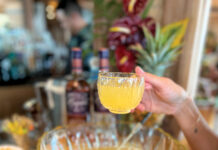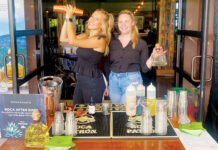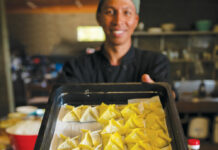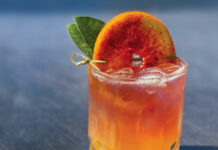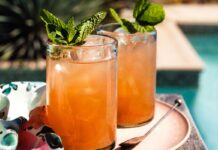Story by Becky Speere | Photography by Tori Speere
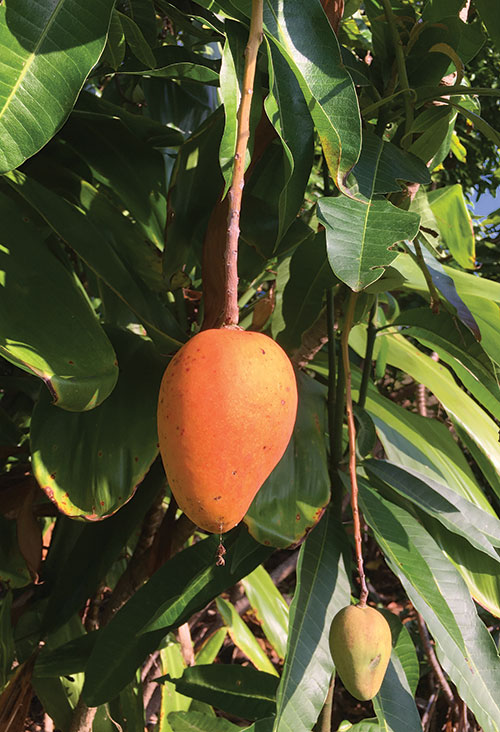
The sixty-foot tree towered over the furo (Japanese bathhouse) of my aunt’s Hilo home, its branches the source of countless mangoes that had hit the corrugated metal roof like bombs. The fruit lay in different stages of decomposition, its fragrance perfuming the sultry air. Carefully searching the slippery mass for edible fruit, I inched my feet among the fallen and smashed mangoes to keep from sliding off the roof and landing ten feet below. Each time I found a perfect gem, I wiped it on my shirt, then tore through the waxy skin with my teeth, peeling it back slowly in long strips. I still remember the bright orange flesh and sweet juice running down my wrists and onto my clothing. I didn’t care. I was in mango heaven. But later in the evening, I began to itch. I raised my blouse to find splotchy red welts covering my belly.
I now know that the fruit’s oil and sap can cause skin rash, as well as more acute reactions, especially if you are sensitive to poison ivy or sumac . . . or overload your immune system and bathe in the juice, as I did. Since that day more than forty years ago, I’ve not had a single adverse reaction to mangoes. But I don’t eat five at one sitting, either.
The mango (Mangifera indica) was brought to the Islands in 1824 from India and the Philippines, and it is one of Hawai‘i’s most popular tropical fruits. It’s also highly nutritious. In October 2015, Medical News Today reported that one cup of diced mango contains 100 percent of the daily requirement of vitamin C, 35 percent of vitamin A, 20 percent of folate, 10 percent of vitamin B6, and 8 percent of vitamin K and potassium — all packed into just 100 calories and half a gram of fat. (MedicalNewsToday.com/articles/275921.php)
Maui is host to some of the best mangoes in the Islands. The trees thrive in areas that receive around fifty inches of rain a year, and at elevations from sea level to 1,500 feet. In early spring, they flush a fiery red with new leaf growth. Flowers appear shortly thereafter, with pollinating honeybees in swift pursuit. On hot summer days, you’ll see mangoes growing in backyards, sometimes breaking branches that are pregnant with this succulent bounty. And there are so many ways to enjoy mangoes: blended into smoothies, baked in bread, stirred into salsa or folded into pancakes . . . even dehydrated and sprinkled with li hing mui powder. The list goes on and on. Just be sure you don’t go on and on, eating too many mangoes at once!
In 1978, Auntie Jane gave me her recipe for spicy mango bread. Try it yourself — no roof-climbing necessary.
AUNTY JANE’S MANGO SPICE BREAD
Mango Bread Recipe
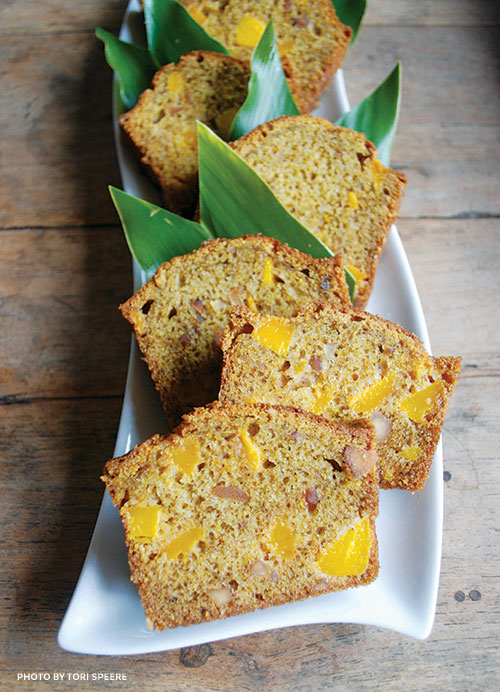
Yield: 1 full-sized loaf or 6 small loaves
Prep Time: 20 minutes
Baking Time: 45-55 minutes for regular loaf, 35-45 minutes for small loaves
Sift:
- 2 cup flour
- 2 teaspoon baking soda
- 1/2 to 1 teaspoon cloves, ground
- 1/2 to 1 teaspoon allspice, ground
- 1/2 teaspoon salt
- 1 to 1 1/2 cup granulated sugar
Beat well:
- 3 eggs
- 1/2 cup vegetable oil or olive oil
- 1/2 cup salted butter, melted
- 2 cup Maui mangoes, diced, with juice*
- 1/2 cup Maui macadamia nuts, chopped**
Fold egg mixture into dry ingredients. Portion evenly into buttered pan(s), 3/4 full, leaving room for batter to rise. Let stand in bowl for 20 minutes.
Meanwhile, preheat oven to 350 degrees. Bake till center springs back and a skewer inserted in center comes out clean.
*Maui-grown mangoes may be purchased at Foodland groceries islandwide, Whole Foods Market in Kahului, and Yee’s Orchards in Kihei.
** Waihe‘e Farms sells Maui-grown macadamia nuts at the Saturday Farmer’s Market (7-11 a.m.) next to Longs Drug Store in Pukalani

